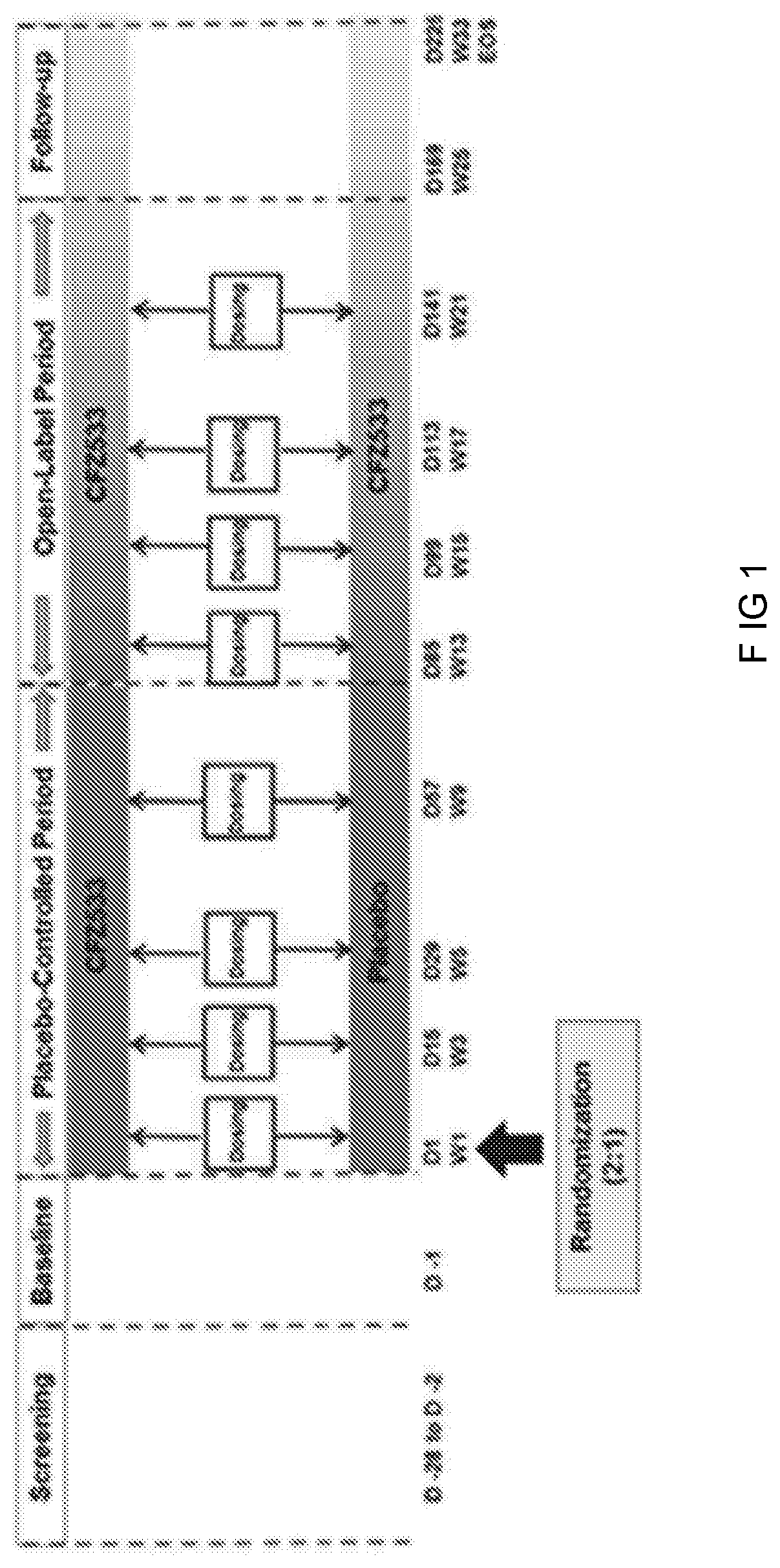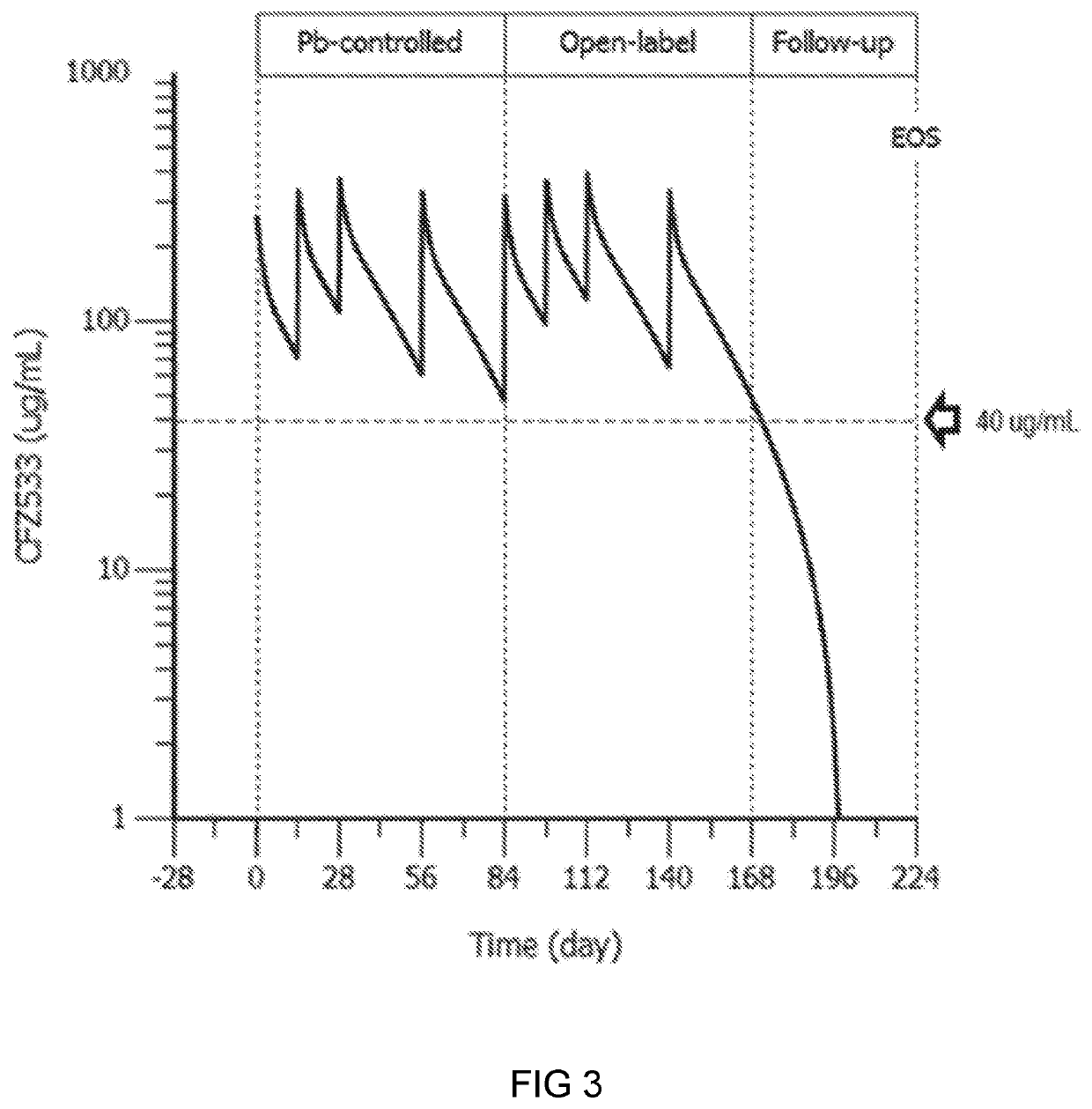Anti-cd40 antibodies for use in prevention of graft rejection
- Summary
- Abstract
- Description
- Claims
- Application Information
AI Technical Summary
Benefits of technology
Problems solved by technology
Method used
Image
Examples
example 1
Antibodies
[0187]CD40 is a transmembrane glycoprotein constitutively expressed on B cells and antigenpresenting cells (APCs) such as monocytes, macrophages, and dendritic cells (DC). CD40 is also expressed on platelets, and under specific conditions can be expressed on eosinophils and activated parenchymal cells. Ligation of CD40 on B cells results in downstream signaling leading to enhanced B cell survival and important effector functions, including clonal expansion, cytokine secretion, differentiation, germinal center formation, development of memory B cells, affinity maturation, immunoglobulin (Ig) isotype switching, antibody production and prolongation of antigen presentation. CD154-mediated activation of the antigen-presenting cell (APC) also leads to induction of cytokine secretion and expression of surface activation molecules including CD69, CD54, CD80, and CD86 that are involved in the regulation of CD4+ T helper cell and CD8+ T cell cross-priming and activation.
[0188]CD154 ...
example 2
ogy
1. Primary Pharmacology
[0254]mAb1 binds to human CD40 with high affinity (Kd of 0.3 nM). However, it does not bind to Fcγ receptors (including CD16) or mediate antibody-dependent cellular cytotoxicity or complement-dependent cytotoxicity. mAb1 inhibits recombinant CD154 (rCD154)-induced activation of human leukocytes, but does not induce PBMC proliferation or cytokine production by monocyte-derived dendritic cells (DCs). mAb1 binds human and non-human primate CD40 with very similar affinities.
[0255]In vivo, mAb1 blocks primary and secondary T cell-dependent antibody responses (TDAR), and can prolong survival of kidney allografts in non-human primates (Cordoba et al 2015). In addition, mAb1 can disrupt established germinal centers (GCs) in vivo.
[0256]The CD40 receptor occupancy and functional activity were simultaneously assessed in vitro using human whole blood cultures. Functional activity was quantified via CD154-induced expression of CD69 (the activation marker) on CD20 positi...
example 3
cal Toxicology and Safety Pharmacology
[0258]Toxicology studies with mAb1 did not reveal any significant organ toxicities, including no evidence of thromboembolic events as reported in clinical trials with anti-CD154 mAbs (Kawai et al 2000). In a 13-week GLP rhesus monkey study (weekly dosing at 10, 50 and 150 mg / kg), increased lymphoid cellularity was noted in 5 / 22 animals which was considered to be due to ongoing infection, an observation consistent with the pharmacology of mAb1. Inflammatory lesions in the kidneys and lungs of 2 animals at 50 mg / kg were noted, and in one of the two animals, lesions in the eyes and trachea were also noted. While a direct effect of mAb1 on the kidney and lung cannot be excluded, the weight of evidence including confirmation of opportunistic pathogens, suggests these findings are likely secondary to mAb1-mediated immunosuppression and of an infectious origin. In view of these inflammatory findings, the No Observed Adverse Effect Level (NOAEL) for the...
PUM
| Property | Measurement | Unit |
|---|---|---|
| Mass | aaaaa | aaaaa |
| Mass | aaaaa | aaaaa |
| Mass | aaaaa | aaaaa |
Abstract
Description
Claims
Application Information
 Login to View More
Login to View More - R&D
- Intellectual Property
- Life Sciences
- Materials
- Tech Scout
- Unparalleled Data Quality
- Higher Quality Content
- 60% Fewer Hallucinations
Browse by: Latest US Patents, China's latest patents, Technical Efficacy Thesaurus, Application Domain, Technology Topic, Popular Technical Reports.
© 2025 PatSnap. All rights reserved.Legal|Privacy policy|Modern Slavery Act Transparency Statement|Sitemap|About US| Contact US: help@patsnap.com



